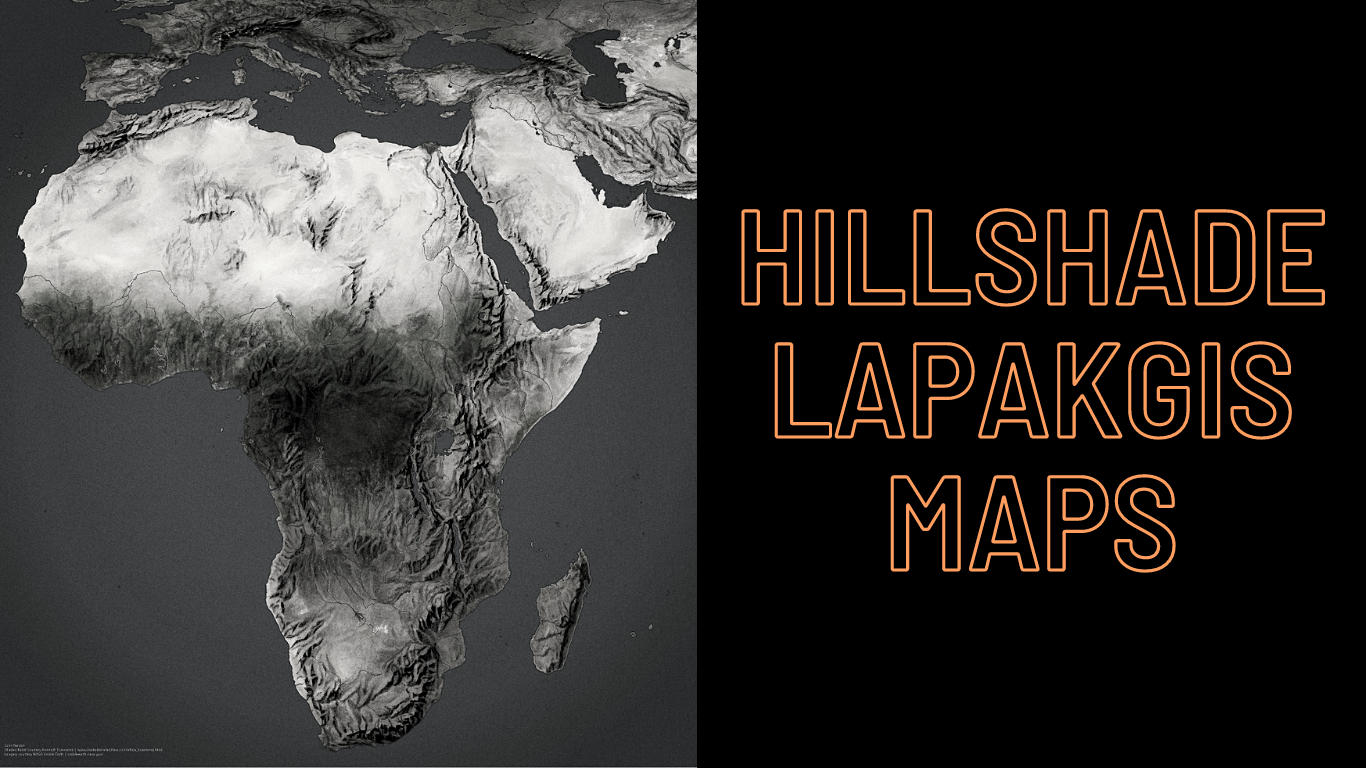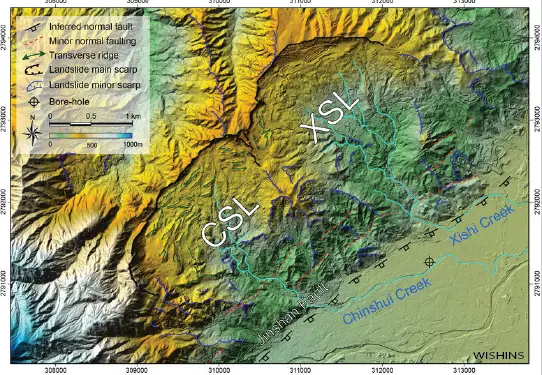Hillshade Lapakgis Mapping: Enhancing Terrain Visualization for Geographic Analysis
Hillshade Lapakgis is a widely used technique in cartography that helps to create a three-dimensional representation of the earth’s surface. This technique simulates the effect of light and shadows on the surface of the terrain, making it easier for cartographers to create visually appealing and accurate maps. This article will explore the science behind Hillshade Lapakgis, the techniques for creating it, the applications of this technique, and its role in cartography.
The Science behind Hillshade Lapakgis:
Hillshade Lapakgis is based on the principle of light and shadows. The technique is used to create the illusion of a three-dimensional terrain by simulating the effect of sunlight falling on the surface of the earth. Hillshade Lapakgis uses a combination of algorithms and mathematical models to create the effect of light and shadows.
The technique involves the creation of a digital elevation model (DEM), which is a three-dimensional representation of the terrain. The DEM is then used to calculate the angle at which sunlight hits the terrain at any given point. This angle is then used to create a shadow map that is overlaid on top of the DEM, creating the illusion of shadows on the terrain.
Techniques for Creating Hillshade Lapakgis:
Creating Hillshade requires a DEM of the terrain. This DEM can be created using a variety of techniques, including LiDAR (Light Detection and Ranging), photogrammetry, and satellite imagery. Once a DEM is available, the following steps are typically followed to create Hillshade :
- Calculate the slope and aspect of the terrain using the DEM.
- Use the slope and aspect to calculate the angle at which sunlight hits the terrain at any given point.
- Use the angle to create a shadow map that is overlaid on top of the DEM, creating the illusion of shadows on the terrain.
- Adjust the brightness and contrast of the Hillshade Lapakgis to make it more visually appealing.
The Role of Hillshade Lapakgis in Cartography:
Hillshade Lapakgis is an essential tool in cartography, allowing cartographers to create visually appealing and accurate maps. The technique is particularly useful in creating topographic maps, which show the terrain’s relief and elevation. Hillshade Lapakgis can also be used to create maps that show the distribution of vegetation, land cover, and other features that are affected by terrain.
Applications of Hillshade Lapakgis:
Hillshade Lapakgis is a versatile tool with a wide range of applications in different fields.
Here are some of the key applications of Hillshade Lapakgis:
Cartography:
Hillshade Lapakgis is widely used in cartography to create 3D visualizations of the terrain, which help to improve spatial analysis and decision-making. It can be used to create maps that show the slope, aspect, and relief of the land surface, which are important in planning for infrastructure, natural resource management, and environmental conservation.
Environmental Management:
It is a useful tool in environmental management because it can be used to monitor changes in land cover and detect areas of deforestation, erosion, and other forms of land degradation. This information is important in developing strategies to mitigate the impact of human activities on the environment and promote sustainable development.
Geology:
Hillshade is widely used in geology to identify areas of interest for further exploration and map geological features such as faults, folds, and mineral deposits. Hillshade can also be used to create visualizations of geological cross-sections, which are useful in understanding the subsurface geology and identifying potential risks such as landslides and sinkholes.
Archaeology:
Hillshade is a useful tool in archaeology because it can be used to create 3D visualizations of archaeological sites, which help to improve spatial analysis and interpretation. Hillshade can be used to create visualizations of the terrain that show the location of archaeological features such as tombs, temples, and ancient settlements, which are important in understanding the history and culture of a region.
Urban Planning:
Hillshade Lapakgis is widely used in urban planning to create 3D visualizations of the urban landscape, which help to improve spatial analysis and decision-making. Hillshade can be used to create maps that show the slope, aspect, and relief of the land surface, which are important in planning for infrastructure, land use, and environmental conservation.
Overall, Hillshade Lapakgis is a versatile tool with a wide range of applications in different fields. By creating 3D visualizations of the terrain, Hillshade helps to improve understanding and analysis of the earth’s surface and supports decision-making in different areas, from environmental management and geology to urban planning and archaeology.
Hillshade Lapakgis in Remote Sensing:
Remote sensing involves the collection of data about the earth’s surface from sensors that are not in direct contact with the earth. Hillshade is a useful tool in remote sensing because it can be used to create 3D visualizations of the terrain that are useful in understanding the spatial relationships between different features. For example, Hillshade Lapakgis can be used to create visualizations of the terrain that show the distribution of vegetation, water bodies, and other features that are important in remote sensing. This information can then be used to map land use, monitor natural resources, and detect changes over time.
Hillshade Lapakgis in Geomorphology and Terrain Analysis:
Geomorphology and terrain analysis involve the study of the earth’s surface and the processes that shape it. Hillshade is a useful tool in these fields because it can be used to create visualizations of the terrain that show the relief, slope, and aspect of the land surface. By analyzing these features, geomorphologists and terrain analysts can better understand the processes that have shaped the land surface over time. Hillshade Lapakgis can also be used to identify features such as ridges, valleys, and hills, which are important in understanding the land surface.
Hillshade Lapakgis in Forestry:
Hillshade is a useful tool in forestry because it can be used to create visualizations of the forest canopy and the terrain beneath it. This information is important in forest management because it can be used to map forest cover, identify forest types, and monitor changes over time. Hillshade Lapakgis can also be used to identify areas of potential landslide or erosion, which are important in ensuring the long-term sustainability of forests.
Hillshade Lapakgis in Mining and Mineral Exploration:
Hillshade is a useful tool in mining and mineral exploration because it can be used to identify areas of interest for further exploration. By analyzing the relief and slope of the land surface, Hillshade Lapakgis can be used to identify areas where minerals are likely to be found. Hillshade Lapakgis can also be used to identify areas of potential landslide or rockfall, which are important in ensuring the safety of mining operations.
Hillshade Lapakgis and Natural Hazard Assessment:
Hillshade is an important tool for assessing natural hazards, such as landslides, floods, and wildfires. By creating 3D visualizations of the terrain, Lapakgis helps to identify areas that are prone to natural disasters and assess the potential risk to life and property.
One of the key uses of Hillshade Lapakgis in natural hazard assessment is to identify areas with high slope and aspect values, which are indicative of unstable terrain. Hillshade Lapakgis can be used to map areas with high slope and aspect values and overlay them with other data layers, such as rainfall and vegetation cover, to identify areas with a high risk of landslides or flash floods. This information is important in developing strategies to mitigate the impact of natural disasters and protect vulnerable communities.
Hillshade Lapakgis can also be used to create visualizations of the terrain that show the potential flow paths of water during floods, which are important in developing flood hazard maps and predicting the potential impact of floods on infrastructure and communities. By creating a 3D representation of the terrain, Hillshade Lapakgis can help to identify areas that are prone to flooding and develop strategies to minimize the risk of damage to property and loss of life.
In addition to landslides and floods, Hillshade Lapakgis can also be used to assess the risk of wildfires by mapping areas with a high fuel load and high slope and aspect values. By identifying areas that are prone to wildfires, Hillshade Lapakgis helps to develop strategies to reduce the risk of ignition and minimize the impact of fires on communities and the environment.
Conclusion:
Hillshade Lapakgis is a powerful tool that is widely used in a variety of fields for creating realistic 3D representations of the terrain, identifying areas prone to natural disasters, and developing strategies to mitigate their impact. Its applications range from cartography to natural hazard assessment, making it an essential tool for anyone working in the fields of mapping, geology, forestry, environmental science, and more.




